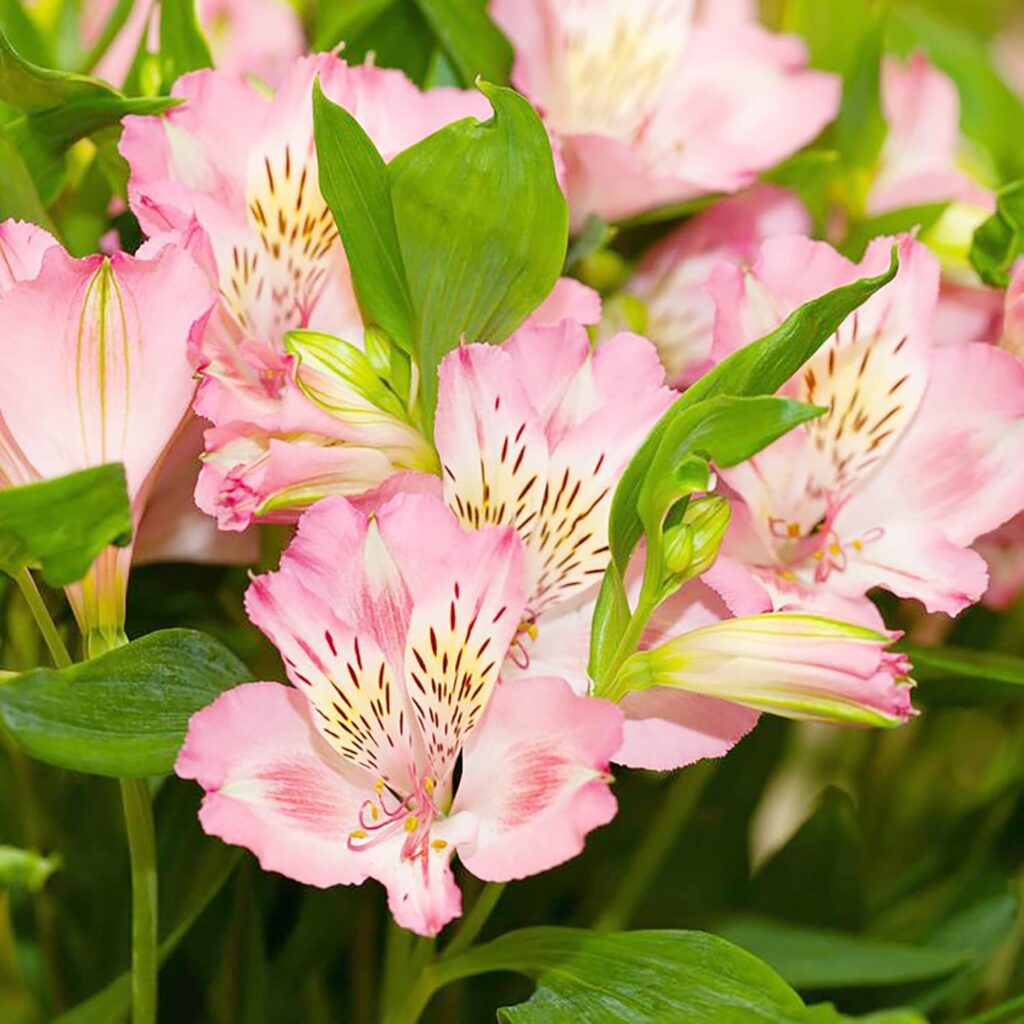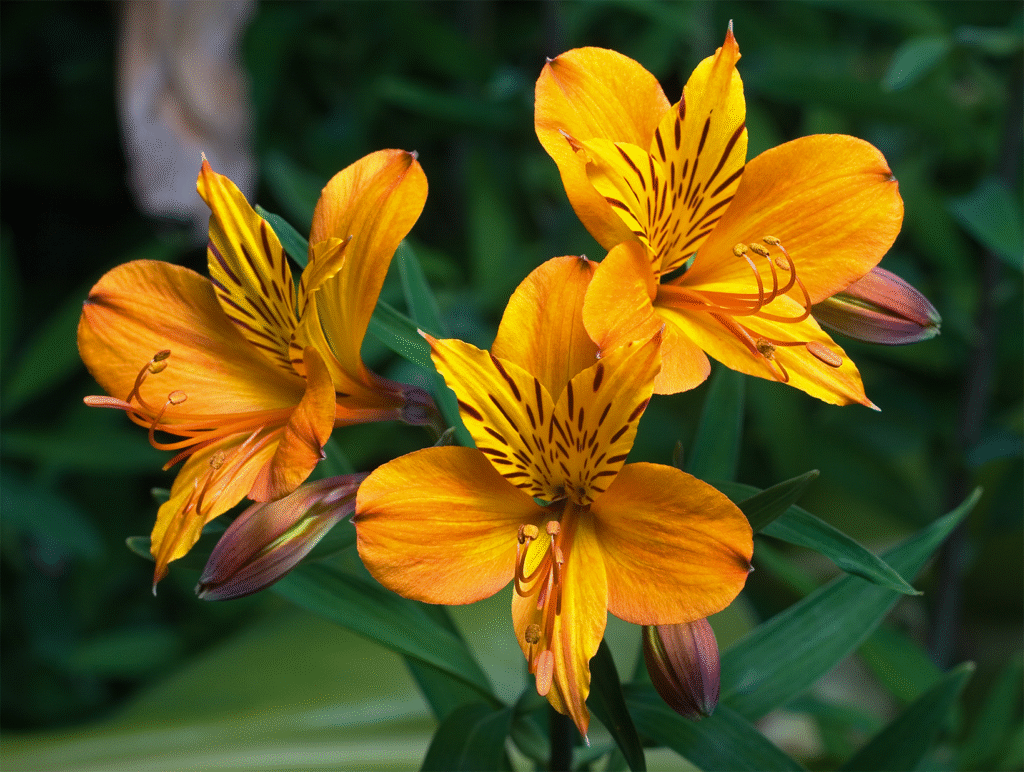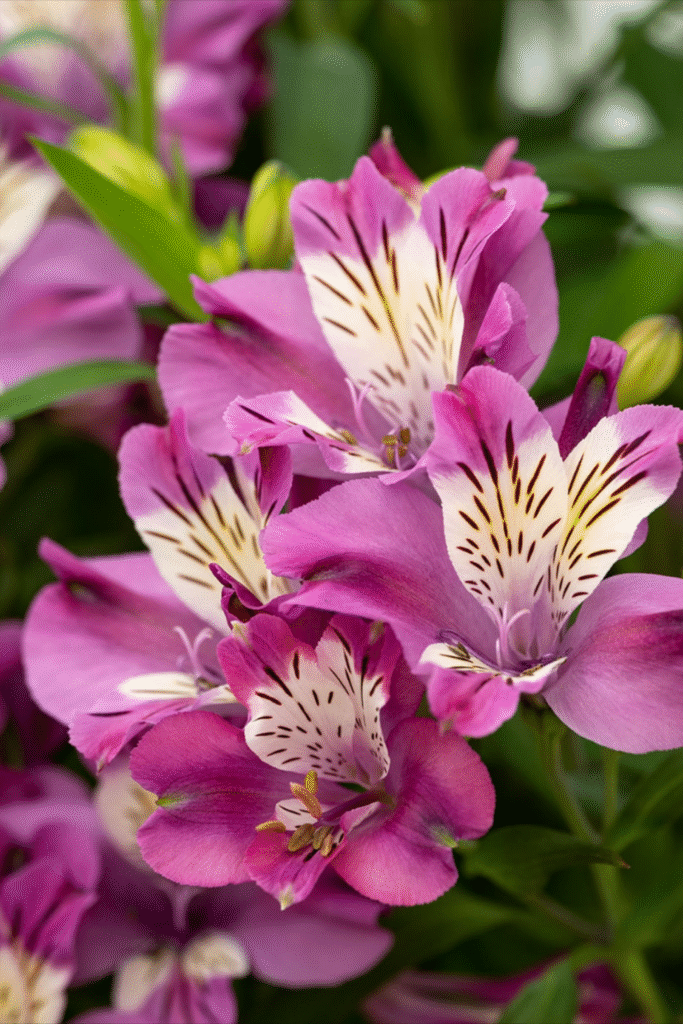Alstroemeria also known as Peruvian Lily or lily of the Incas belongs to the family of Alstroemeriaceae. It is native to South America and although it is often referred as Peruvian Lily most species of this plant grow in the area of Central Chile. In Brazil, there are roughly 40 species of alstroemeria which grow in the eastern part of the country.
Breeders have created over 190 different types of these flowers, offering a wide range of colors like white, yellow, orange, apricot, pink, red, purple, and lavender. Many of the most eye-catching and popular varieties today come from crossing winter-growing plants from Chile with summer-growing ones from Brazil. This clever mix solves the problem of seasonal dormancy and gives us plants that stay green most of the year and bloom almost nonstop.
This kind of breeding started in the U.S. in the 1980s, but now most of it happens in the Netherlands. The flowers, which look like small lilies, are a favorite in the floral industry because they last a long time in bouquets—up to two weeks in water without wilting. In home gardens, most of these plants bloom from late spring into early summer. They can handle cold down to about 23°F (−5°C) and do best with well-drained soil, regular watering, and at least six hours of morning sun.
Scientific Classification

- Kingdom: Plantae
- Order: Liliales
- Family: Alstroemeriaceae
- Subfamily: –
- Genus: Alstroemeria
Description
Alstroemeria, or Peruvian lily, grows on tall, graceful stalks that reach about 20 inches to 3 feet high, each topped by a burst of trumpet‑shaped blooms measuring around 4–7 cm across. Six petals fan out in a dazzling mix of colors—vibrant yellows kissed with apricot, creamy whites laced with green veins, soft pinks dotted in magenta, fiery oranges blending into gold, and deep purples flecked with darker spots. If you peer inside, you’ll spot tiny stripes on the inner petals, acting like runway lights that guide bees and hummingbirds right to the sweet nectar. Below the flowers, shiny, lance‑shaped leaves twist upward in a quirky flourish, creating a lush green fountain that stays fresh even in mild winters.
Alstroemerias carry more than just good looks—they also speak in the language of flowers. White blooms symbolize innocence, pink stands for friendship, red shouts passion, orange beams with enthusiasm, purple exudes elegance, and yellow promises joy. Gardeners love them because they thrive in full sun or partial shade, as long as the soil drains well and stays slightly acidic. Give them about an inch of water a week, and you’ll enjoy blooms from late spring all the way into autumn. They bounce back each year from hardy underground rhizomes, slowly spreading into clumps you can divide every few seasons to keep your display fresh. Snip a stem for your vase, and you’ll have vivid, exotic blossoms that open more fully each day and last up to two weeks—transforming any room into a living work of art.



Historical and Modern Applications
Since long before European botanists set foot in South America, indigenous communities in what is now Chile and Argentina prized Alstroemeria for both food and folk medicine.
Alongside its ornamental value, traditional healers brewed infusions and crafted oils from various parts of the plant:
- Oral health: Thanks to its antiseptic properties, Alstroemeria made an effective gargle or mouth rinse for ulcers, gingivitis, and throat infections
- Blood purification & diuretic: An infusion of dried rhizome cleansed and “purified” the blood, promoted kidney function, and encouraged gentle diuresis—often prescribed for women with leucorrhea or fluid retention
- Eye inflammations: Herbalists used rhizome or flower infusions as washes or compresses to soothe conjunctivitis, red or tired eyes, and other ocular irritations
- Respiratory support: A gentle hydrosol distilled from the petals served as an expectorant and emollient, easing coughs, bronchial irritation, and sore throats by loosening mucus and coating inflamed tissues
- Analgesic & anti‑inflammatory: Macerating petals in oil yielded a warming, antispasmodic liniment for muscle aches, joint pain, earaches, and even cracked nipples in nursing mothers